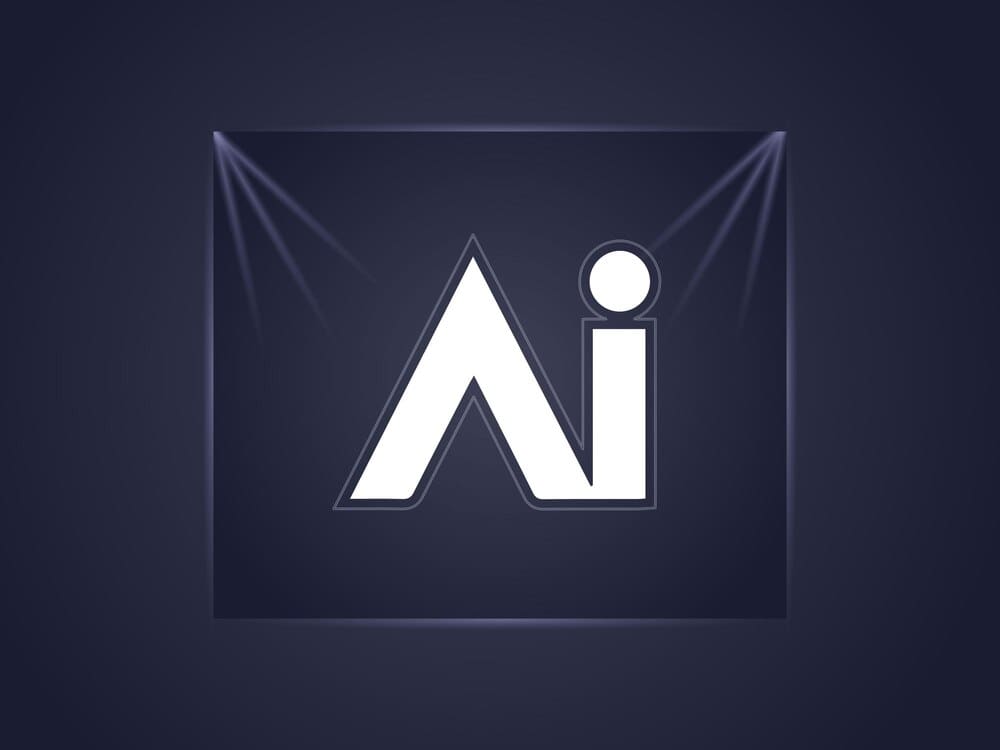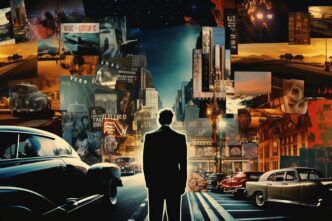For startups, solopreneurs, and small businesses, the once-prohibitive cost and time required to develop a professional brand identity are rapidly diminishing, thanks to a new wave of artificial intelligence. AI-powered platforms like Looka, Logo.com, and even advanced image generators such as Midjourney are now enabling entrepreneurs to create compelling logos and comprehensive branding kits in minutes, not weeks. This shift democratizes design, allowing businesses globally to access sophisticated branding tools directly through their web browsers, fundamentally changing the economics and speed of launching a new brand.
The New Face of Branding: AI as a Creative Partner
The traditional path to creating a brand identity was a well-worn, and often expensive, one. It involved lengthy consultations with design agencies, multiple rounds of feedback, and a significant financial investment that could be a major barrier for new ventures. This process, while thorough, was inherently slow and inaccessible to many.
AI has disrupted this model entirely. Instead of acting as a replacement for human creativity, these new tools serve as powerful creative partners. They provide a launchpad for ideas, automate repetitive tasks, and empower individuals who lack formal design training to bring their vision to life. The core value proposition is a potent combination of speed, affordability, and accessibility.
What once required weeks of back-and-forth communication can now be accomplished in a single afternoon. This allows founders to focus their limited resources on other critical areas of the business, like product development and market strategy, without sacrificing a professional brand presence from day one.
How AI Logo Generators Work Their Magic
The technology behind these platforms may seem complex, but the user experience is designed for simplicity. The process typically begins with the user providing a few key inputs about their business. These include the company name, industry, and a selection of keywords or values that describe the brand, such as “modern,” “trusted,” “playful,” or “luxurious.”
Users are then often asked to select preferred color palettes and styles of logos they find appealing. This initial data collection serves as the creative brief for the AI. Under the hood, sophisticated machine learning models, including Generative Adversarial Networks (GANs), get to work. These algorithms have been trained on vast datasets of existing logos, fonts, and design principles.
The AI analyzes the user’s input and cross-references it with its knowledge of color theory, typography, and composition. It then generates hundreds of unique logo variations, presenting them in a gallery for the user to review. From there, the user can select a favorite and enter a customization phase to fine-tune colors, fonts, layouts, and symbols until the design is perfect.
The Top AI Tools for Logos and Branding Kits
The market for AI branding tools is expanding quickly, but a few platforms have emerged as leaders due to their robust features, ease of use, and the quality of their output. Each offers a slightly different approach, catering to different user needs.
Looka: The All-in-One Brand Identity Platform
Looka has positioned itself as more than just a logo maker; it is a comprehensive brand identity generator. Its key strength lies in its “Brand Kit,” which uses your finalized logo to automatically create a vast suite of marketing materials. This ensures brand consistency across every conceivable touchpoint.
After designing your logo through its intuitive process, Looka generates over 300 branded templates. These include social media profiles and post templates, business card designs, email signatures, invoices, and even a full brand guidelines document. This document details your exact color codes (HEX, RGB) and font names, a critical resource for maintaining a cohesive look.
Looka is the ideal solution for businesses that need to hit the ground running with a complete and consistent set of marketing assets. It removes the guesswork and manual labor of applying a new brand identity to various formats.
Logo.com: Speed and Simplicity
Logo.com is built for speed and efficiency. Its primary goal is to get a high-quality logo into a user’s hands as quickly as possible. The platform’s interface is clean and straightforward, guiding the user through the creation process in a matter of minutes. It is an excellent choice for founders who need to validate an idea quickly or generate a professional logo for a presentation or landing page without delay.
While its focus is on the logo itself, Logo.com also provides essential branding assets. This includes a social media kit with pre-sized files for major platforms, business card options, and a simple one-page brand guideline. While not as exhaustive as Looka’s Brand Kit, it covers the core necessities for a new business.
Wix Logo Maker: Seamless Website Integration
For the millions of businesses built on the Wix website platform, the Wix Logo Maker is a natural and powerful choice. Its biggest advantage is its seamless integration into the Wix ecosystem. Once you create a logo, you can instantly apply it to your Wix website and gain access to a full range of branding tools.
The tool provides high-resolution logo files in various formats (including transparent SVG vector files), which is crucial for professional use. Because it’s part of Wix, it’s designed to work perfectly with the website builder, making it simple to ensure your online presence is perfectly on-brand. If your business already lives on Wix, this is often the most convenient and effective option.
Midjourney: The Advanced Choice for Ultimate Creativity
Unlike the other tools, Midjourney is not a dedicated logo maker but a general-purpose, text-to-image AI generator. It represents the cutting edge of creative AI and offers unparalleled artistic freedom for those willing to learn its system. Users interact with Midjourney by writing descriptive text prompts, a skill known as “prompt engineering.”
For example, a user might prompt: a minimalist logo for a coffee brand named 'Aura', vector art, simple line work, featuring a stylized coffee bean emitting soft waves. Midjourney would then generate four unique visual interpretations of this concept. Its strength is in creating truly unique, abstract, and artistic symbols that template-based generators might struggle to produce.
However, Midjourney has a steep learning curve and several limitations. It often struggles to render text correctly, and its output is a raster image (like a PNG or JPG), not a scalable vector file. This means a logo concept from Midjourney must be manually recreated or traced in a professional design program like Adobe Illustrator to become a usable, scalable asset.
Beyond the Logo: The Power of an AI-Generated Brand Kit
The true revolution in AI branding extends beyond the logo itself. The automatic generation of a comprehensive brand kit is a game-changer for operational efficiency. A brand kit is the definitive playbook for a company’s visual identity.
These AI-powered kits typically include logo variations for different use cases (e.g., a full logo, a simplified icon, a favicon for a browser tab), a defined color palette with specific codes for digital and print, and a typography hierarchy specifying which fonts to use for headlines and body text. By automating the creation of dozens of templates for social media, presentations, and documents, AI ensures consistency with zero extra effort.
This consistency is vital for building brand recognition and trust. When customers see the same colors, fonts, and logo style across a company’s website, social media, and products, it builds a sense of professionalism and reliability.
The Human Touch: Knowing When to Hire a Designer
Despite the incredible capabilities of AI, these tools are not a universal solution. It’s crucial for businesses to understand their limitations and recognize when the expertise of a human designer is necessary. AI tools are powerful, but they lack true strategic understanding.
An AI cannot conduct deep market research, analyze your competitors’ branding, or understand the psychological nuances of your target audience. Its creativity is based on patterns in its training data, which can sometimes lead to generic or derivative designs that look similar to others. Furthermore, the legal landscape surrounding the copyright and trademarking of AI-generated art is still murky. A logo must be sufficiently original to be legally protected, a standard that can be difficult to prove with AI-generated work.
The most effective strategy is often a hybrid approach. Businesses can use AI tools for initial brainstorming, generating a wide array of concepts and mood boards at a low cost. They can then take their top two or three AI-generated ideas to a professional human designer. The designer can then use their strategic insight to refine the concept, ensure its originality, and create a final, legally defensible brand identity that truly resonates with the target market.
A New Era for Brand Creation
Artificial intelligence has fundamentally lowered the barrier to entry for professional branding. For entrepreneurs and small businesses, this technology is a powerful democratizing force, providing access to design tools that were once the exclusive domain of large corporations with deep pockets. Platforms like Looka and Logo.com deliver immense value through speed and automation, while advanced systems like Midjourney push the boundaries of creative ideation. While they don’t replace the strategic wisdom of a human designer, these AI tools have cemented their place as an indispensable resource in the modern business toolkit, heralding a new, more accessible era for brand creation.








